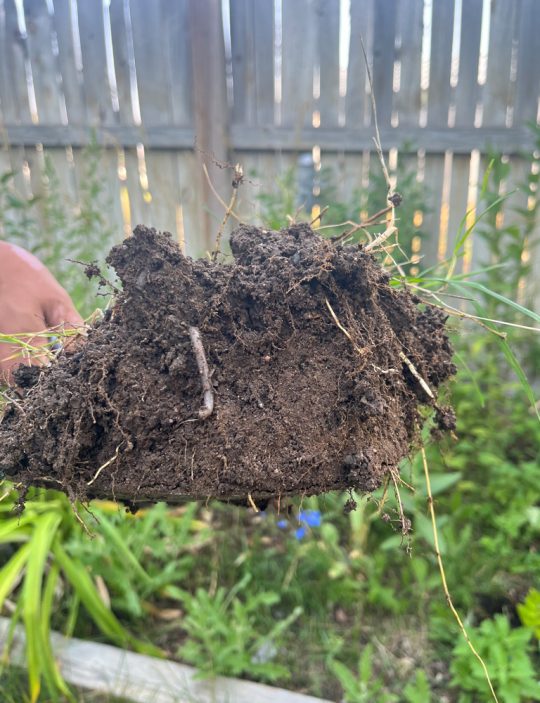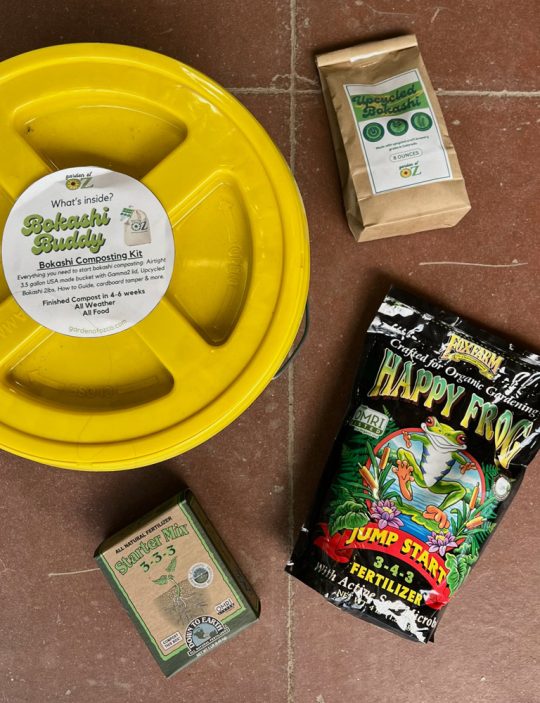By Shannon Moreau

Whether you are a seasoned gardener or new to planting in your outdoor spaces, chances are you have a few unique stories when it comes to our native soils. Colorado’s soil is known for being heavy clay with a high pH of 7.0-8.3 and often brings to mind dry, cracked, and barren land. Our soil can have a pretty mixed reputation, depending on who you ask, which raises the question: how do you grow plants in such a unique setting? Before planting any vegetables, perennials, or trees, it is crucial to assess the soil in your area. By following a few helpful tips, it’s possible to create healthy soils that are full of life and we can play a part in creating the conditions that promote that biodiversity!
What’s going on below the surface?

Determining what your soil needs can be a bit daunting. If you tend to leave your soil bare, it is exposed to continual disturbance and erosion, which severely limits soil health. This leads to a reliance on continual fertilization to sustain plant health. Vegetable beds that are heavily tilled or perennial beds that have been buried under weed fabric for extended amounts of time have a lot in common as far as health is concerned. The lack of activity from micro- and macro-organisms means nutrients are unable to cycle throughout the soil, resulting in tough soils that are hard to dig through. If it’s hard to dig, it is also tough for roots to break through!
For deeper analysis, send in samples to receive a full diagnostic test that can be done by the Soil, Water and Plant Testing Laboratory at Colorado State University. This laboratory analysis can help you address a variety of issues including nutrient balance, organic content, and pH.
Signs of a healthy garden bed include dark colored soil with a loamy (chunky and a bit crumbly) texture and lots of life. This means activity above and below the root zone from earthworms and other smaller insects and arthropods. Outside of these bigger organisms there is a wide variety of microorganisms. Fungi and bacteria each play important roles in the breakdown of debris and the cycling of nutrients. Without each of these organisms performing their roles, our soils are left uninhabitable for plants and life.

Tips for improvement
To boost the health of struggling soil, start slowly by introducing organic matter and beneficial fungi. Unless you are planting in an established garden bed that has been routinely amended, the average garden will benefit from the addition of a 1” layer of compost that can be added in spring. Over time, the addition of compost and organic matter will change your soil composition and add nutrients to your soil. Plant based composts or mixes with manure can be used at this amount without running the risk of too rich a mix. Take care in sourcing your composts to ensure you don’t use a mix that is too “hot” (meaning too fresh of a source) as you run the risk of burning your plants. For beneficial microorganisms, look to Mycorrhizae. These fungi are present in many root stimulators and natural fertilizers and form symbiotic relationships with a wide variety of plants, helping them take up water and nutrients. These can be incorporated into the soil while you are planting or used as a top dress in spring.

As mentioned before, light tilling and working your soils can give a quick boost. However, the nutrients are broken down quickly by microbes and are not long lasting food sources. The solution is to limit bare soils and continual disturbance when possible. Layering debris (such as lawn clippings and leaves) and mulching between plants is a helpful way to mitigate this issue. As these biodegradable mulches break down they feed your soil and plants. Start by layering plant debris across the top of your garden beds, then covering that with a 1/2” – 1” inch layer of compost.
A common problem with this approach is over-amending your soils – too much of a good thing is still too much! Improving soil health does not happen overnight or through only one product and practice. It is a slow process that requires persistent and gradual inputs of organic matter like compost, mulching with biodegradable materials (bark mulches, straw, leaves, etc.), beneficial fungi, and plant matter to create a habitable environment. Take your time and enjoy the journey as you grow your soil and your garden!
Originally published on July 31st, 2024. Updated on August 1st, 2024.
